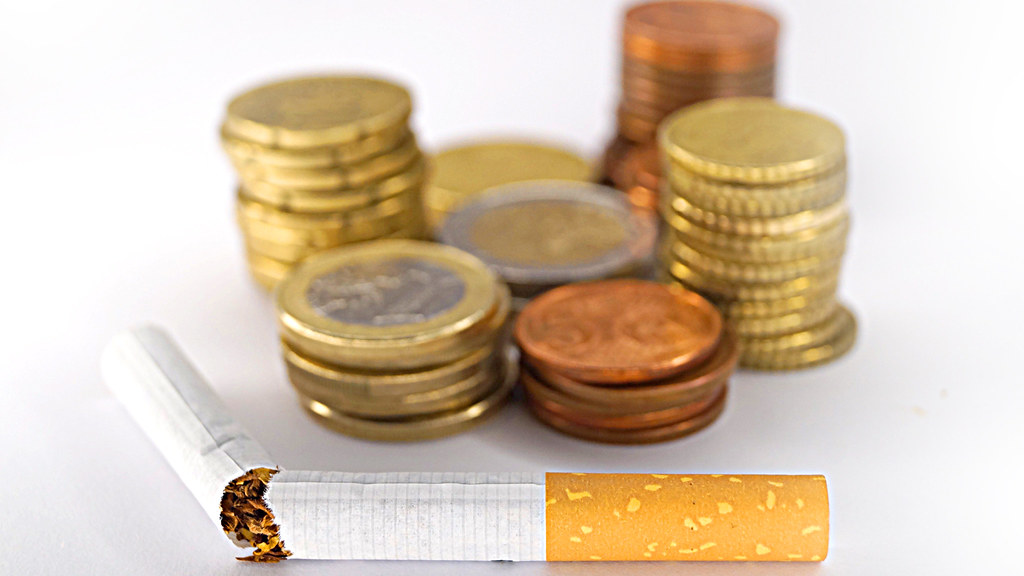The introduction of a maximum price-cap for cigarettes sold in the UK would limit tobacco companies’ ability to fix prices and would help to cut smoking rates, according to a new study from a team at the University of Bath.
Currently, despite regular tax increases on cigarettes in the UK, tobacco companies have generally been able to cushion smokers from the full impact of tax rises by keeping prices on some products low and offsetting costs with increases on their other, higher-end products.
This means there is currently a wide variation in cigarette prices in the UK, a difference of up to £5 from the cheapest to most expensive brands (from around £9.75 at the lowest end to £14.65 at the highest). A price cap, by comparison, would effectively mean there was a standardised cost for cigarettes helping to make future tax rises much more effective.
Like regulation for utilities industries, a wholesale price-cap on cigarettes would be imposed by government or a regulatory agency and would be applied to every product. Excise duty, sales taxes, retailer markups and any other legitimate costs would be added to that price to produce a shop price.
The team behind the study are calling for the UK government to consider proposals which they say could form part of England’s new tobacco control plan currently being developed. This aims to make England ‘smokefree’ by 2030. According to latest analysis from the ONS, as of the first quarter of 2020, around 5.5 million adults (13.5%) smoked in the UK. Despite efforts, smoking rates remain stubbornly high.
Author of the paper, Dr Rob Branston from the University of Bath’s School of Management and Tobacco Control Research Group explained: “We know that using tax to increase the price of cigarettes is one of the most cost-effective ways to reduce smoking. However, in many countries including the UK, we also know that tax increases can often be undermined by pricing strategies by tobacco companies.
“A price cap means a regulator, rather than the industry, setting tobacco prices. This type of price regulation has its origins in utility regulation, where competition is lacking due to the nature of the industry. Competition is similarly lacking for tobacco, where a small number of transnational companies dominate most markets, providing clear economic justification for pricing regulation.”
UK tobacco duty is already one of the highest in the world and so accounts for a significant majority of the cost of tobacco in shops. However, the tax rate varies between products. For example, previous research from the same team at the University of Bath found that roll-your-own tobacco is taxed at lower rates than factory made cigarettes.
Setting a maximum price cap would require a tobacco regulator to be created that would investigate and rule on what price could be charged. The price would be based on the cost of production allowing only a minimal profit.
The researchers suggest such a move could eliminate the industry’s ability to price discriminate on products, with the price charged to retailers only changed when the taxes or the price cap changed. It would also change the profit incentive behind the sale of these deadly products.
Concerns have recently been raised about the methods used by tobacco companies to counter tax rises. According to the World Health Organization (WHO), these include stockpiling (e.g., over-producing before a tax increase); subtly changing an aspect of a product, like its weight or size, so that it falls into a lower tax bracket; using price promotions to counter tax rises (e.g., discounts, rebates and gifts); and, most significantly, spreading tax increases across a portfolio (e.g. increasing prices on luxury brands whilst absorbing the tax increase on cheaper products).
In the study, the researchers point to how tobacco companies in the UK have kept price-sensitive customers by shrinking pack sizes. In Australia, packs come in more than 10 different sizes so that after every tax increase, most smokers could find either a smaller product that is cheaper up front, or a larger product that is cheaper per stick or per gram.
Last year, ASH published detailed recommendations to support the government’s Tobacco Control Plan 2021 which included a ‘polluter pays’ fund for tobacco control, in addition to tougher regulations to further denormalise smoking. The government’s plans are yet to be published.
Dr Branston adds: “Countries like the UK, with a strong regulatory tradition, could lead the way and international co-operation could strengthen regulatory capacity, reduce costs through the sharing of analysis, and address industry attempts at transfer pricing. At this stage we would like the UK government to announce that they are looking to pursue the policy as part of their new tobacco control plan to make England smokefree by 2030.”

